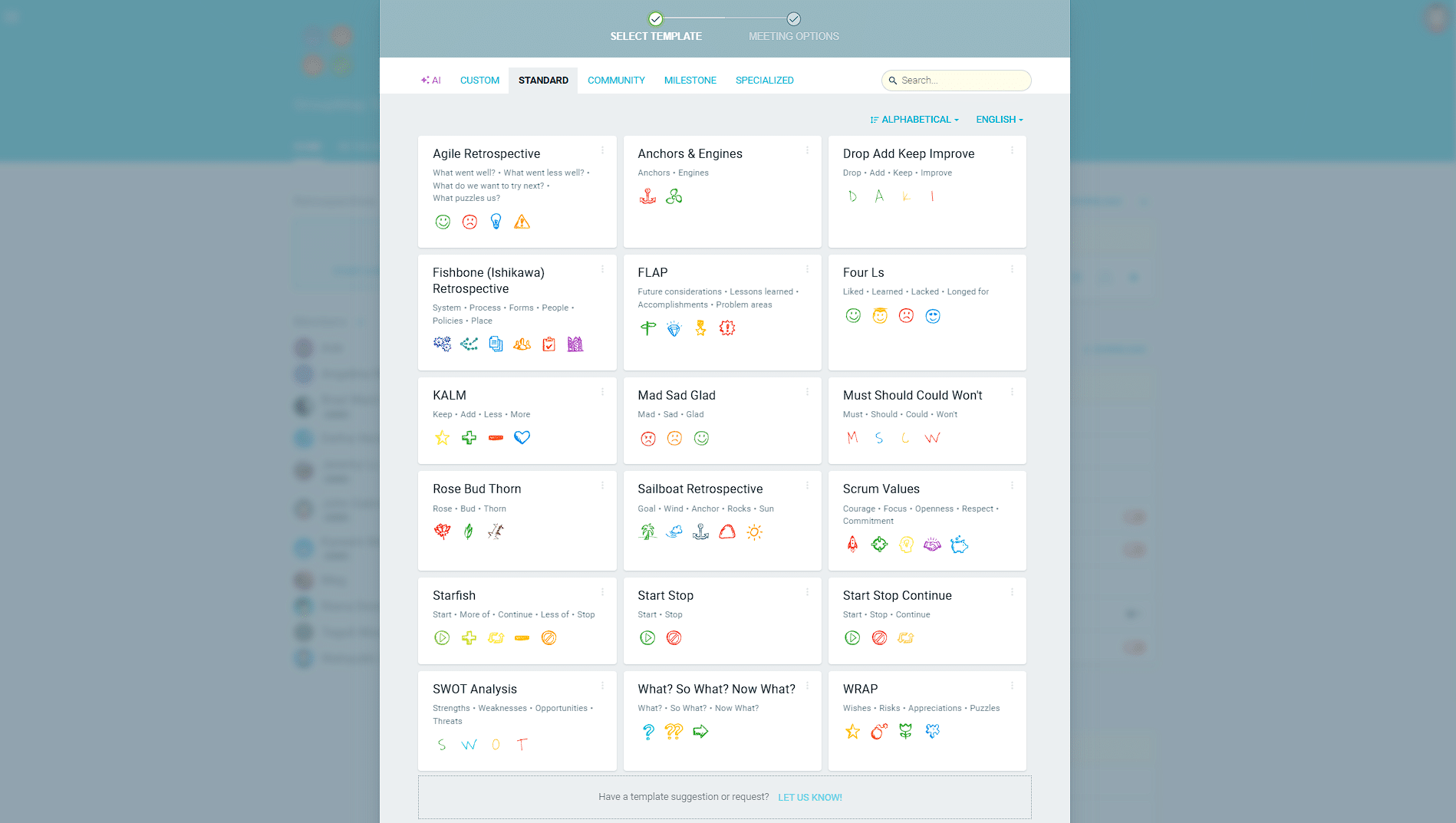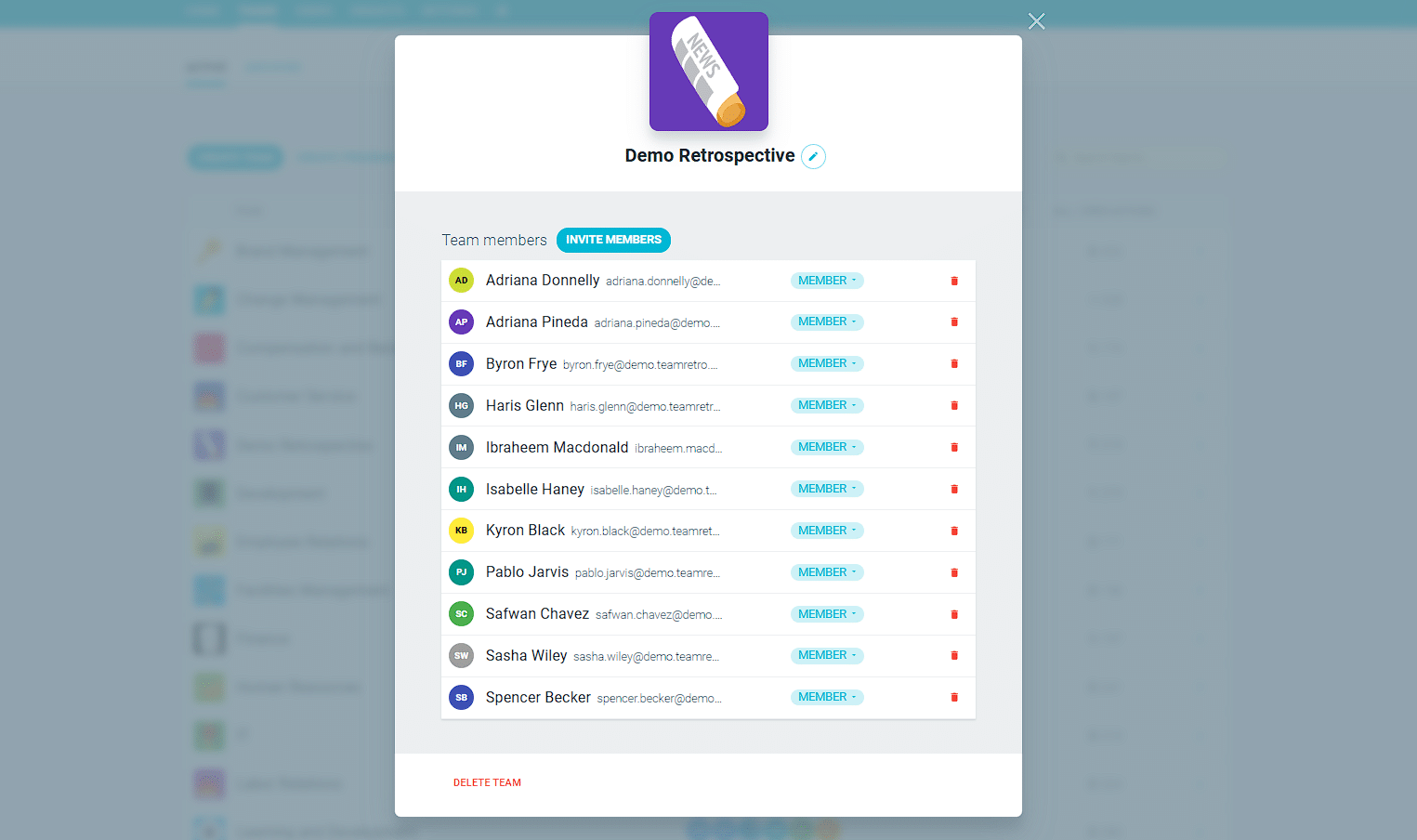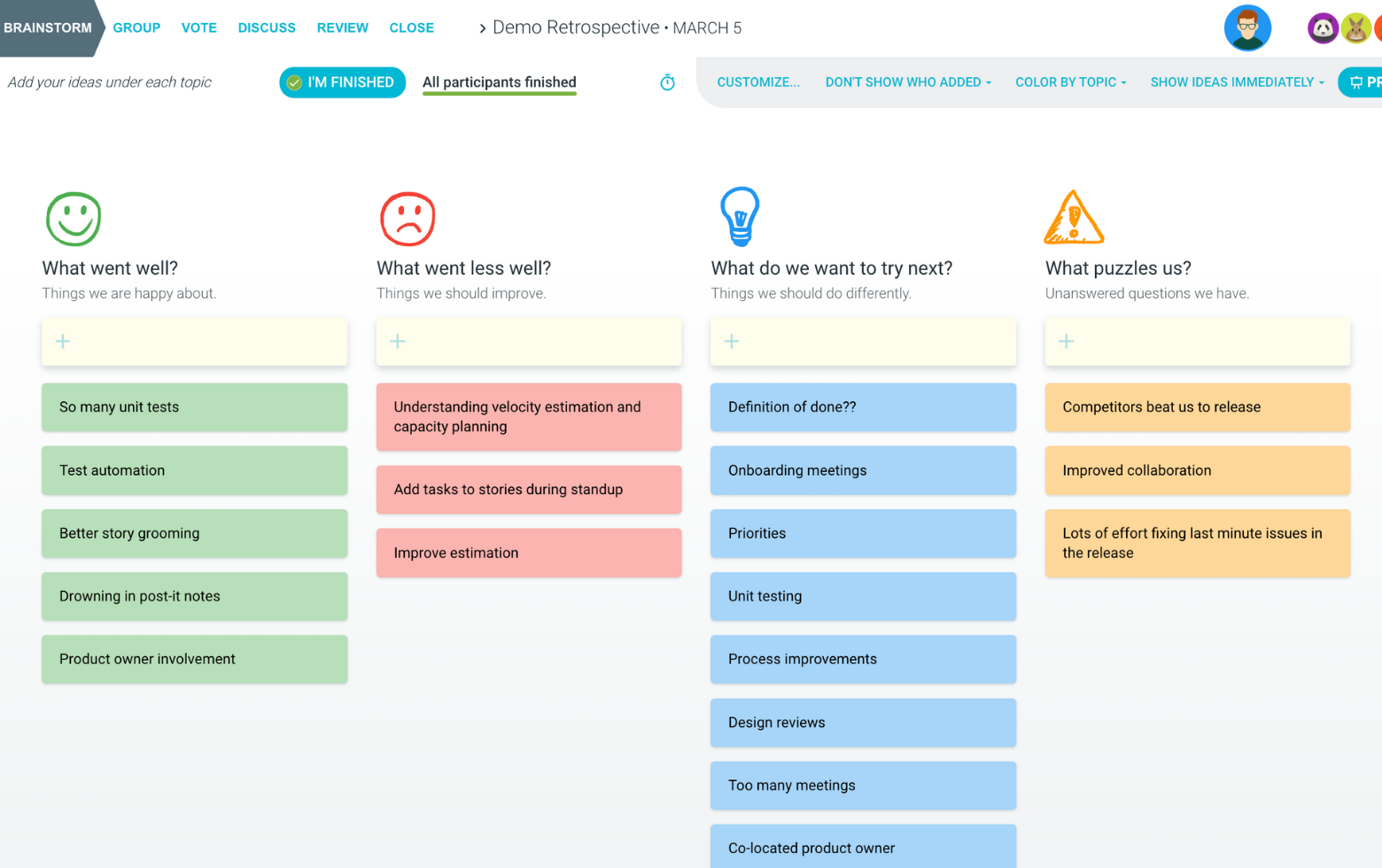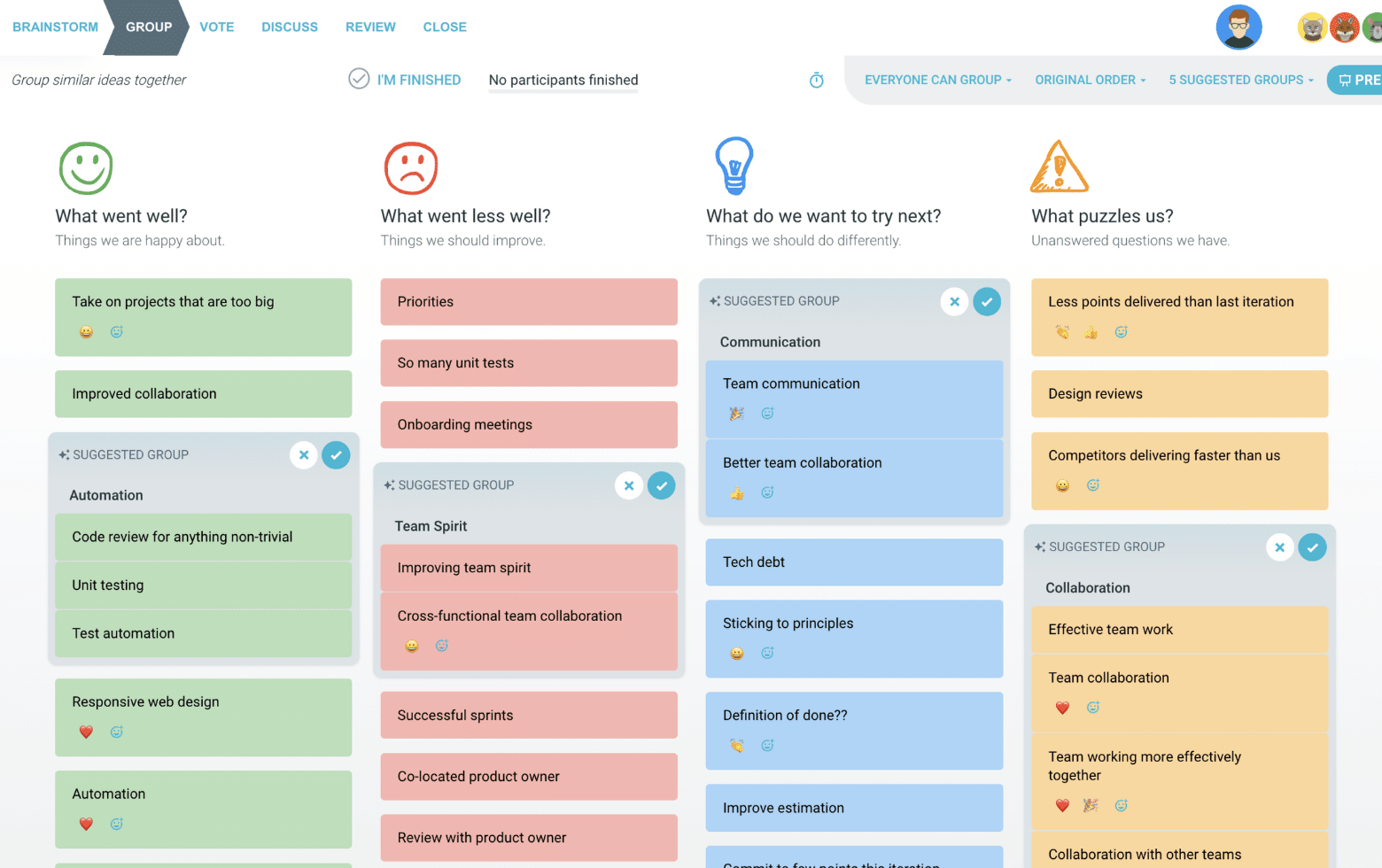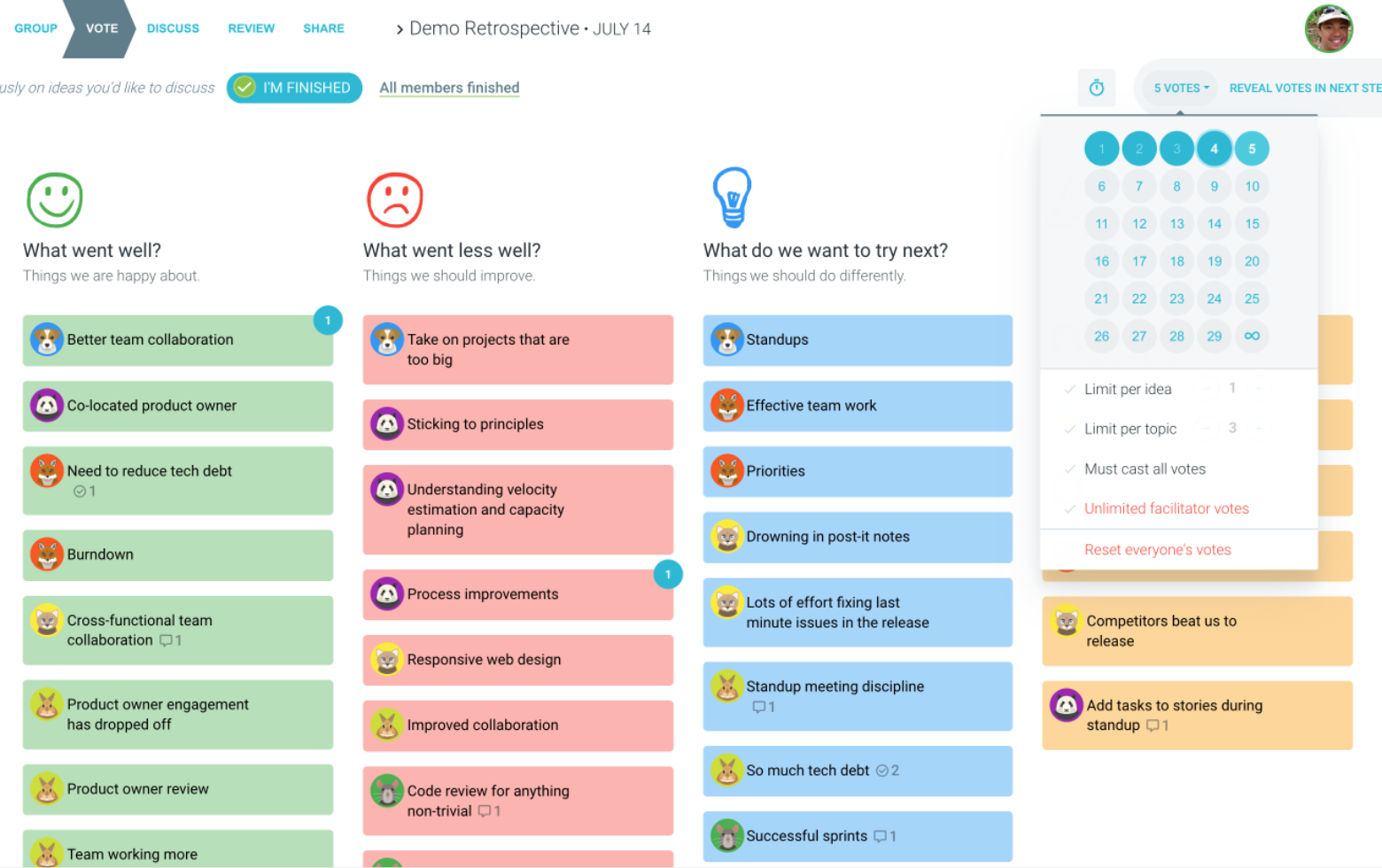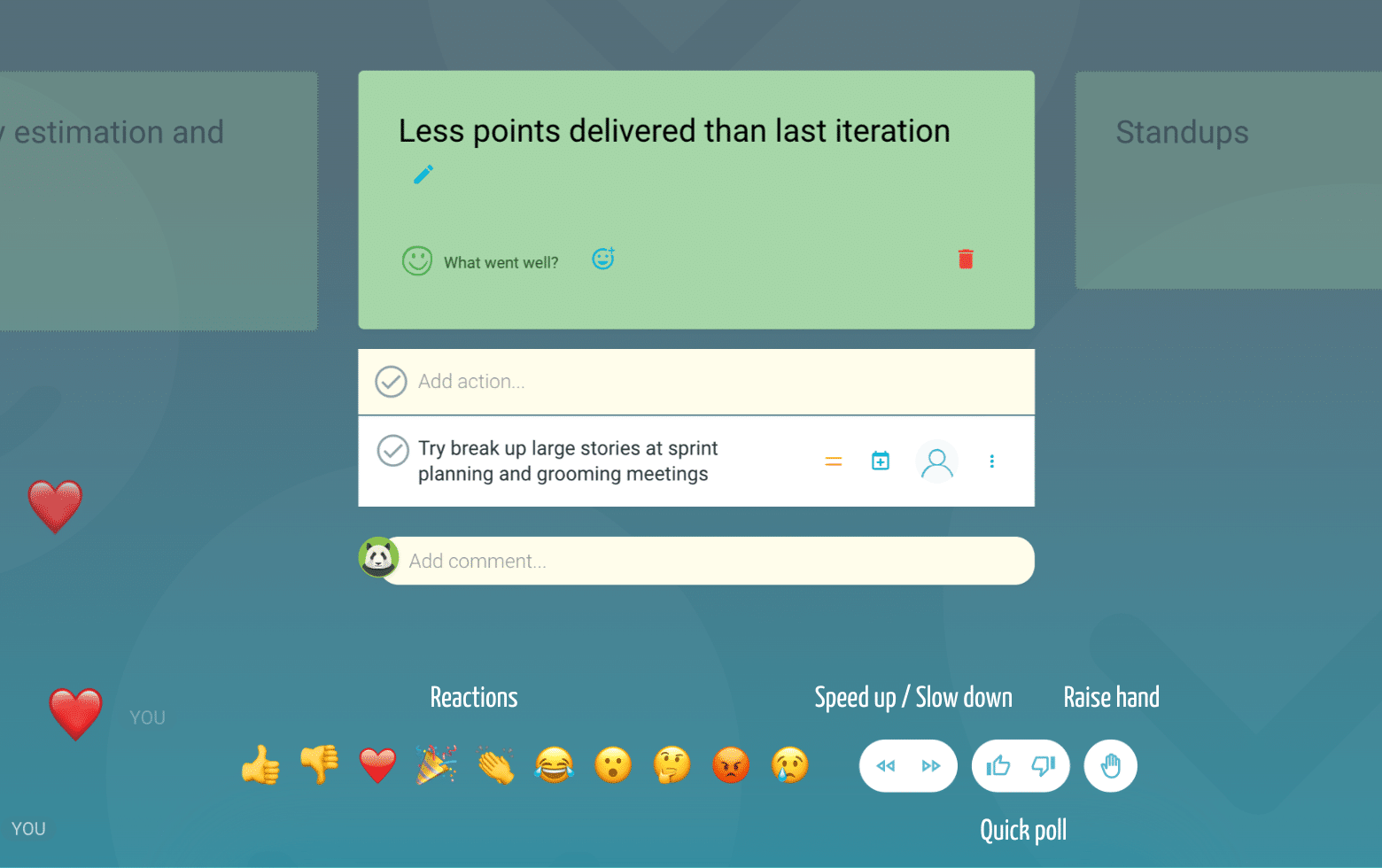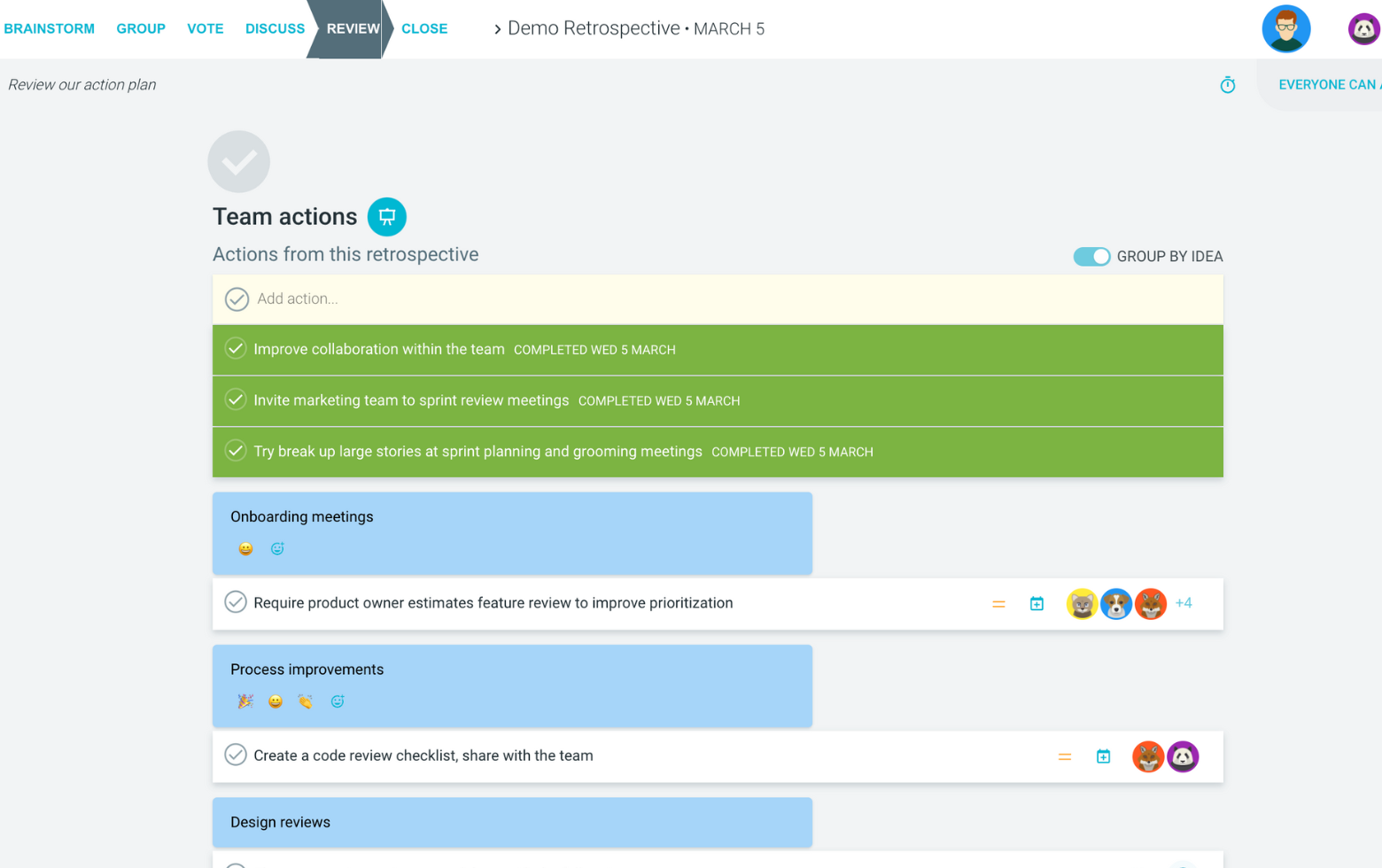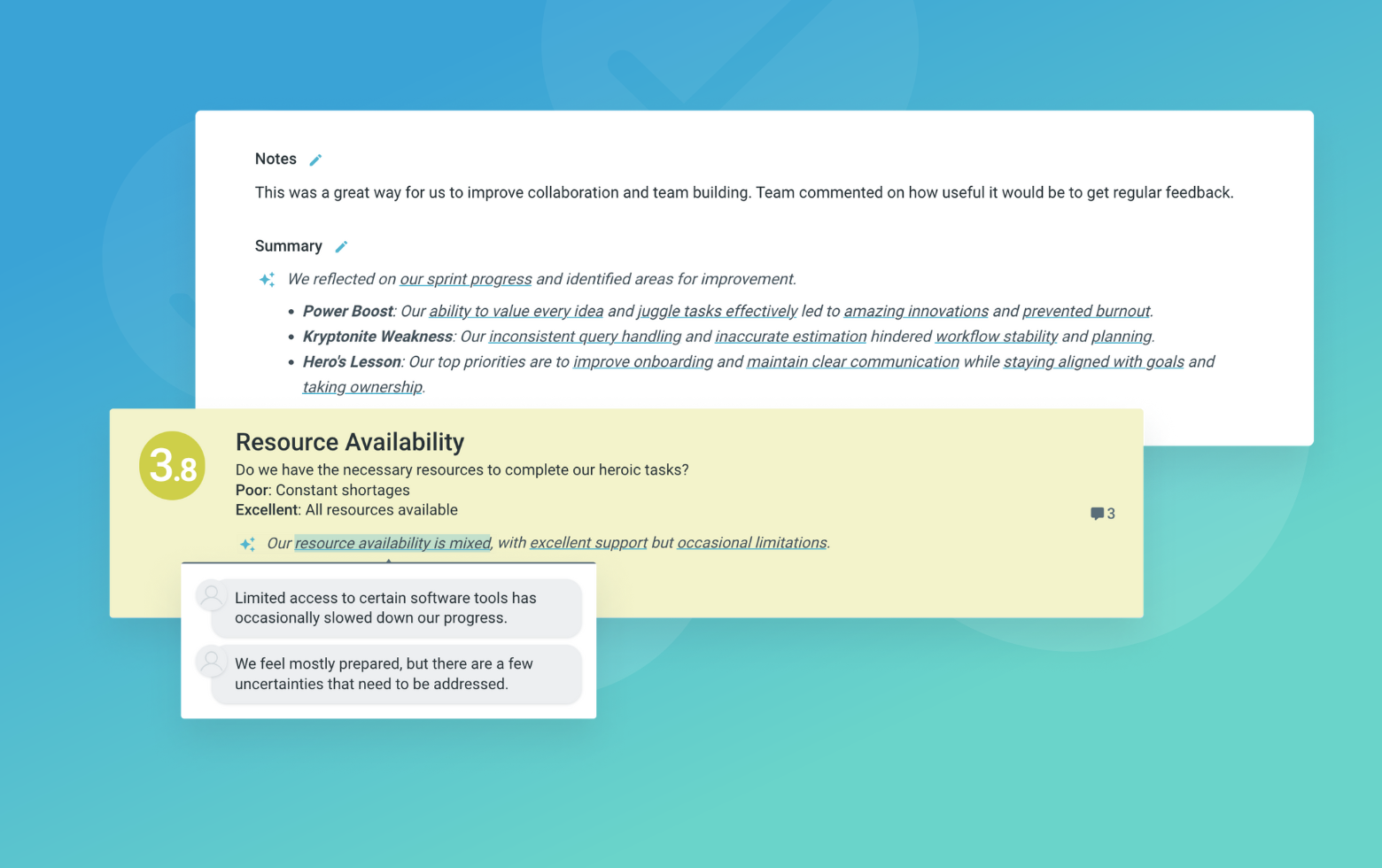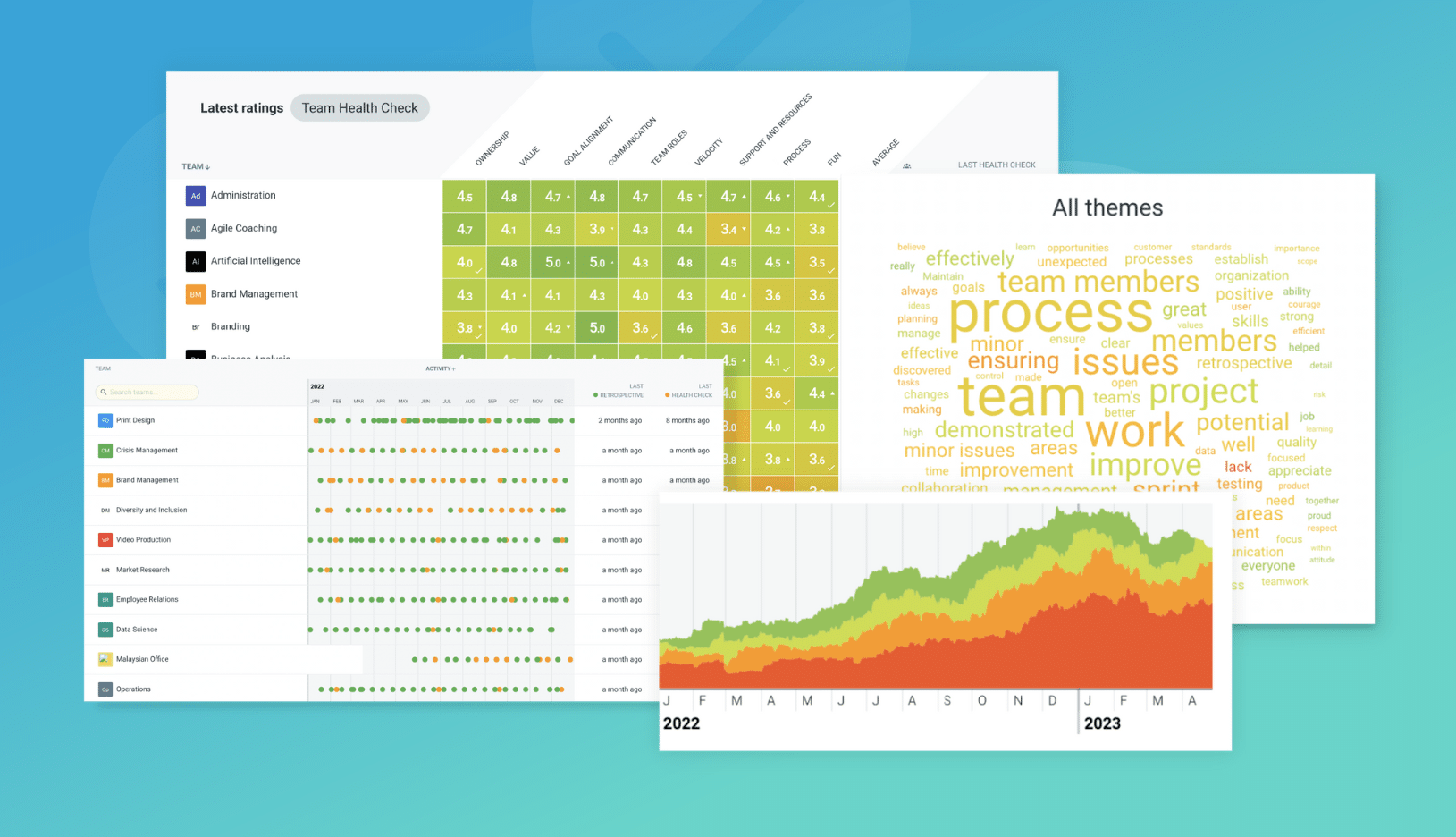What is the Start Stop retrospective?
The Start Stop retrospective is a simple agile tool designed to throw a spotlight on a team’s processes. Participants define the actions they should start doing and those they should stop. They then go on to shape their next steps with these in mind.
Like the more detailed Start Stop Continue retrospective, the Start Stop retrospective is an action-focussed exercise. It aims to create an action list of practical steps to support a team’s continuous improvement.
The Start Stop retrospective is particularly helpful for teams that are new to agile. It’s easy to use and helps generate very clear action items.
Start Stop retrospective format
Start
What should we start doing? What ideas do you have to address current problems? What have you seen work with other projects?
Stop
What should we stop doing? What isn’t delivering value? What roadblocks can’t be negotiated?
This style of retrospective can be used when your team is having trouble completing a task. Having the ability to see what has been slowing you down and what you have achieved despite this, can be helpful in providing confidence when trying to complete a difficult task.
Suggested icebreaker questions for the Start Stop retrospective
- What have you recently (deliberately) stopped doing and why?
- What do you think is easier – starting something or stopping it?
- If you could go back in time, where would you go and what would you start doing?
Retro Rehearsal
Apply the Start Stop retrospective to your personal finances. What should you start and stop doing?
With the input in mind, will you change your habits?
Ideas and tips for your Start Stop Retrospective
- Rotate the Scrum Master. This will change the voices that are heard and give people a chance to contribute to the retrospective in a different way.
- Use a Return on Time Invested (ROTI) tool to monitor the effectiveness of your meeting.
- Looking for a way to disrupt groupthink or not let a good idea go to waste? Why not give an asynchronous retrospective a try! As well as offering your team a platform to focus on the project priorities, it allows team members space to contribute their own thoughts in their own time.
- Keep your team agreements in view during your retrospective. Remember you can add to them at any time.
- Seeking to support a psychologically safe space? Switch up your retrospective to allow participants to offer their input anonymously – all voices will be heard at the same volume and ideas rather than the person who suggested them will be the focus.
- Make the most of your presentation mode and drill down into ideas at the brainstorming, grouping as well as discussion stages of your retrospective. This will let those who contributed the input the chance to explain and feel heard.
How to run an Start Stop retrospective in TeamRetro
Start Your Session in a Click
Log into TeamRetro and choose your template. Customise questions and the workflow to create your perfect retro for your team.
Create Your Team Easily – No Separate Accounts Needed
Brainstorm Individually – Free From Bias
Smart Grouping for Faster Insights
Fair, Flexible, and Fast Voting
Engage, React, and Capture Key Insights
Walk your team through ideas one by one with Presentation Mode. Stay in sync, spark real-time discussions, and capture feedback with comments, live reactions, and polls—all in one place.
Turn Ideas Into Action
Propose next steps with team buy-in, get AI-powered action suggestions, and keep everything in one place. Committed actions sync to your personal dashboard and integrate with your workflow tools—keeping you on track.
Save, Share, and Stay on Track
Get quick AI-powered summaries, add facilitator notes, and store retrospectives in your library for easy access. Schedule your next session and track published actions to keep your team accountable at the next retro.
Turn Team Data into Actionable Insights
Uncover trends, common themes, and key engagement metrics at a glance. Track sentiment shifts, analyze conversations, and monitor completed actions to drive continuous improvement.
